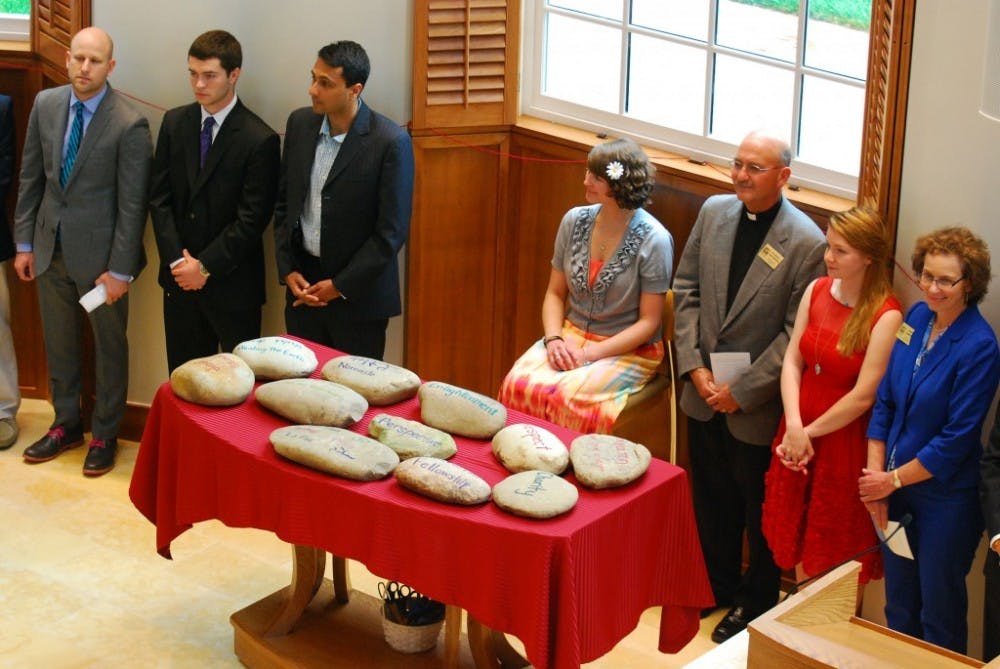Religious songs rose into the rafters of the Numen Lumen Sacred Space at Elon University before its official dedication April 30. Completed in early March, the Numen Lumen Pavilion serves as Elon’s multi-faith center and houses the Truitt Center for Religious and Spiritual Life.
As the choir sang, a group of students and members of the Spring Convocation panel filed into the room clutching stones, which they placed on a table at the front of the sacred space. The stones were painted with words such as “namaste” that reflected the religious beliefs of their bearers.
At the beginning of the ceremony, one red string was woven through the crowd, and Chaplain Jan Fuller asked each person to
hold onto it with two hands. She explained the string was a Buddhist and Tibetan ritual for blessing. Red is known throughout much of Asia as a color of celebration, courage and strength, Fuller said.
At the end of the blessing of the sacred space, the cord was cut. Fuller urged the audience to each take a piece with them as a reminder of the blessings shared in the space.
“Monks tie strings on each other’s wrists, wishing these qualities on each other,” she said. “The red strings we take with us today will symbolize the blessings we share in this place.”
Following Fuller’s introduction, students and six panelists from the afternoon’s Spring Convocation each spoke briefly to the crowd about their religions and hopes for the pavilion.
After the students and panelists spoke, President Leo Lambert addressed the crowd. He mentioned Edna Truitt Noiles, class of 1944, and her husband, whose 2001 donation helped create the Truitt Center. Their contributions helped foster the conversation about interfaith relations among students, Lambert said.
“We want to make it possible for students to explore their own and other faith traditions and then to go into the world and lead lives of reconciliation,” he said.
But the world is at a religious crossroads, according to Eboo Patel, a panelist, an American Muslim and founder of the Interfaith Youth Core.
“A big part of what the twenty-first century will be about is whether religion is a bubble of isolation, a barrier of division, a bomb of destruction or a bridge of cooperation,” he said.
Randy Holste, a visiting professor from Wake Technical Community College, said now is the time to really sit down and examine interfaith relations.
“I think religious diversity surrounds us,” he said. “It’s something we must take hold of. If we don’t, we’ll continue down a difficult road.
The Numen Lumen Pavilion is a promising start toward the “bridge of cooperation”, according to Lauren Emery, assistant chaplain.
“The actual building itself is a testament to the fact that Elon has made a very powerful and lasting commitment to interfaith,” she
said. “To have this place in the center of campus is a really big statement that this is something that we really value.”
Richard McBride, chaplain emeritus, added that having people from all different faith backgrounds together was a notable first for Elon. But he questioned whether students would take full advantage of the space at a time when almost a quarter of incoming Elon students identify themselves as without religious affiliation.
“These are the college years when people explore, and that’s fine,” he said. “That’s what they should do. I just hope they bring their exploration to the conversations that happen here and not avoid the possibilities of what’s here.”


